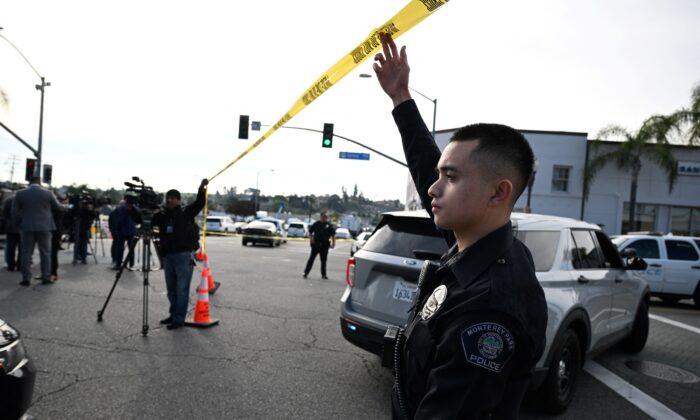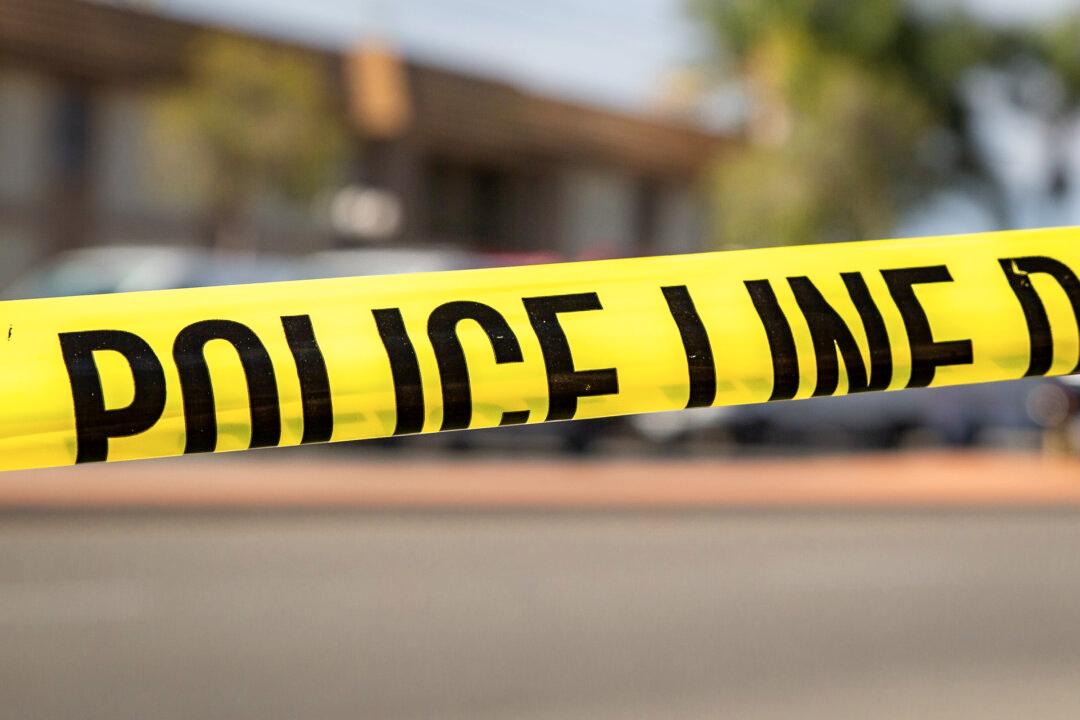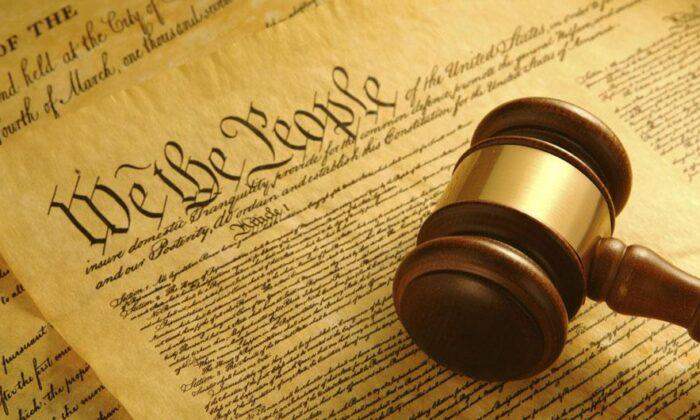Commentary
President Joe Biden traveled to Monterey Park, California, the site of a mass public shooting that left 11 dead in January, to announce new executive actions on gun control. He touts the proposals as necessary “to reduce gun violence and make our communities safer.” But California already has all the gun control laws that Biden put forward, and yet, it has a higher per capita rate of mass public shootings than the rest of the country.
Measures already in place include background checks on all transfers of firearms, “red flag” gun confiscation laws, and an assault weapon ban. Even if Biden’s ideal background check law had been in effect and perfectly enforced, it wouldn’t have stopped one mass public shooting this century.
Biden exaggerated the support for his background check proposals. The surveys he cites compress long, complicated proposals into one-sentence summaries. But when people are told that these laws would turn someone into a felon just for temporarily lending a handgun to a woman who is being threatened by a stalker, survey respondents answer that they oppose the regulation.
One proposal would force people who sell or transfer only a few guns to obtain a federal firearms license. But even licensed dealers face an uphill regulatory battle. Biden’s zero-tolerance (zero tolerance for what?) policy drives licensed dealers out of business. The end effect is to stop gun sales.
But Biden has another goal. Despite federal law explicitly forbidding a national gun registry, the president has begun putting together a national database on gun ownership. By the beginning of last year, there were almost a billion entries.
Forcing gun transfers to go through licensed dealers will help create a more complete registry. And that’s about all it will do, since gun licensing and registration don’t solve any crime. The bottom line is to drive up the price of guns for law-abiding citizens and therefore stop gun sales altogether. In other countries, and even in parts of the United States, registration is consistently used to eventually take away people’s guns, and given Biden’s constant call to ban all semi-automatic weapons, which make up about 85 percent of all guns sold in the United States, that is a real concern here.
Biden wants to “improve public awareness and increase” the use of red flag laws (Extreme Risk Protection Orders). But this diverts focus from better laws already on the books in all 50 states. Involuntary commitment laws provide for evaluations by mental health experts, an emergency court hearing, and a lawyer. These laws give judges more options, such as mandatory outpatient mental health care, driver’s license suspensions, or taking away their guns.
By contrast, red flag laws only take away a person’s guns. If a person is truly suicidal—almost all the red flag cases involve concerns over suicide—there are so many other methods that are just as likely to be successful (hanging oneself, walking in front of a train, jumping from a height). Simply taking away someone’s legally owned guns isn’t a serious solution.
Gun control advocates claim that California’s 1990 assault weapon ban is responsible for its 55 percent drop in firearm mortality from 1993 to 2017. But California’s murder rate peaked in 1993 at 13.1 per 100,000 people, rising from 10.9 in 1989, the year before the state enacted its assault weapons ban. So why did the murder rate fall by 10 percent in 1994 and not in 1990, and continue falling by 53 percent by 2000? California’s tough three-strikes criminal punishment law started on March 7, 1994.
Biden says we need national gun control laws to protect states like California, but that ignores the fact that the guns used in California’s mass public shootings were from California. Indeed, the firearms in all but two mass public shootings over the past 25 years were from the state where the attack occurred.
Gun control measures aren’t just ineffective against mass public shootings—they actually encourage attacks. The shootings keep occurring in places where people can’t have concealed handguns. In Los Angeles County, where two mass public shootings occurred in January, there is only one permit for every 5,660 adults. In San Mateo County, where another attack occurred, there is one permit per 24,630 adults. By comparison, there is one permit holder for every nine people in the 43 right-to-carry states.
Concealed handgun permit holders make a difference in those 43 states. Indeed, people legally carrying guns stopped at least 37 mass public shootings since 2020. And when Americans are allowed to legally carry concealed handguns, they stop about half of the active shooting attacks in the United States.
Mass public shooters purposefully pick targets where they know their victims can’t protect themselves. The perpetrator of a mass shooting in Buffalo, New York, last year wrote in his manifesto: “Areas where CCW [carrying a concealed weapon] are outlawed or prohibited may be good areas of attack ... Areas with strict gun laws are also great places of attack.” Other mass murderers have made similar statements.
These killers may be crazy, but most aren’t stupid. Yet, states like California, New York, and New Jersey are moving to create more gun-free zones, where mass murderers won’t have to worry about victims protecting themselves.
Unfortunately, the gun control Biden pushes won’t stop mass public shootings and will only make problems worse. Gun control failures are used to call for more gun control laws. The solutions that would actually work aren’t being discussed.
From RealClearWire
Views expressed in this article are opinions of the author and do not necessarily reflect the views of The Epoch Times.





